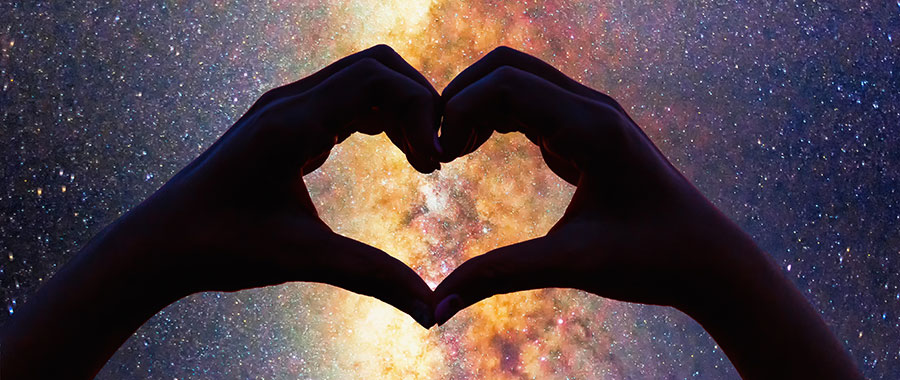The interconnectedness of religion and civilization has long been an area of inquiry that elicits profound interest and contemplation. The Bahá’í teachings provide a distinct perspective on this intricate relationship, particularly through the metaphor of “stardust.” This term invokes the scientific principle that every human being is comprised of elements forged in the crucibles of stars, presenting a compelling narrative arching between the celestial and the terrestrial, thereby deepening our understanding of the forms we create as a civilization.
At the very essence of Bahá’í thought is the acknowledgement of the oneness of humanity. This concept permeates various teachings within the faith and underscores the idea that individuals, regardless of their backgrounds, converge from a common origin. The metaphor of stardust serves as a reminder of this shared genesis, symbolizing unity in substance and spirit. Each person embodies a piece of cosmic history; hence, the trajectory of civilization is not merely a collection of disparate events and actions, but rather a symphony of interconnected lives emerging from the same cosmic source.
In analyzing civilization through the lens of Bahá’í teachings, we observe that human societies are inherently dynamic. Every community is influenced by myriad factors, including culture, history, and social dynamics. However, what binds these communities together is a shared ethos of learning, growth, and advancement. The stardust narrative exemplifies how the very foundation of our existence carries implications that extend beyond the individual, informing our communal structures and moral frameworks.
Religion, therefore, becomes a vital conduit through which civilization is structured. As articulated in Bahá’í literature, religion and science must be harmonized, for both domains unveil intricate truths about our existence. This dialectical relationship denotes that while scientific inquiry seeks to understand the universe, religion provides the moral compass to guide humanity’s actions and decisions within it. This union is crucial for the flourishing of societies, positing that civilizations rooted in spiritual principles shall thrive, whereas those lacking such foundations may falter.
The constructs that emerge from religious teachings shape the institutions and social norms within civilizations. The Bahá’í Faith advocates for the establishment of justice, equity, and universal harmony, positing that societal advancement hinges on ethical frameworks derived from spiritual insights. In this light, the notion of “stardust” transcends its physical implications, penetrating the moral fabric of our collective existence. The civilization we aspire to create is at once temporal and eternal, reflective of both our immediate environment and the greater cosmos.
Moreover, the Bahá’í Faith emphasizes that education is pivotal in the evolution of civilizations. This educational framework does not solely encompass academic endeavors; it is also about nurturing virtues and capacities that enable individuals to contribute meaningfully to society. The teaching that we are all composed of stardust propels a deeper understanding of identity, fostering an appreciation for diversity and inclusivity. In cultivating such awareness, we dismantle the barriers that fragment societies and promote a vision of collective achievement.
Furthermore, the historical unfolding of civilizations reveals a tapestry woven with spiritual influence. Across epochs, pivotal figures within various faith traditions have emerged as architects of civilization, shaping norms, values, and systems that govern human interaction. The Bahá’í teachings assert that such spiritual leaders, irrespective of their geographical or temporal origins, are instrumental in facilitating the continual advancement of civilization. This perspective fosters an understanding that religion is a nurturing force, encouraging societies to evolve toward more comprehensive and just expressions of shared humanity.
The allure of the stardust metaphor lies in its profound implications for human existence. As individuals, we are compelled to seek significance in our lives and the structures we create. Religion provides answers to existential questions, offering solace in the face of uncertainty and chaos. The Bahá’í principles encourage a quest for knowledge, insight, and meaning—forming an intrinsic link between the human experience and the cosmos. This connection reaffirms our role as co-creators of civilization, whereby our actions reverberate through time, sculpting the social landscapes of future generations.
In conclusion, the nexus between Bahá’í teachings and the concept of civilization is underscored through the metaphor of stardust. It invites contemplation on the essence of our shared humanity. By recognizing our common origins, we deepen our commitment to construct societies grounded in unity, love, and justice. As we navigate the complexities of modern life, the teachings advocate for a conscientious approach that fosters learning, champions moral integrity, and listens to the echoes of our cosmic heritage. In celebrating our stardust origins, we affirm our potential as architects of civilization, continually striving to mold a world reflective of our highest aspirations. The enlightened synergy of religion and civilization beckons us to engage thoughtfully in crafting a harmonious future—one infused with the resplendence of our shared cosmic legacy.
